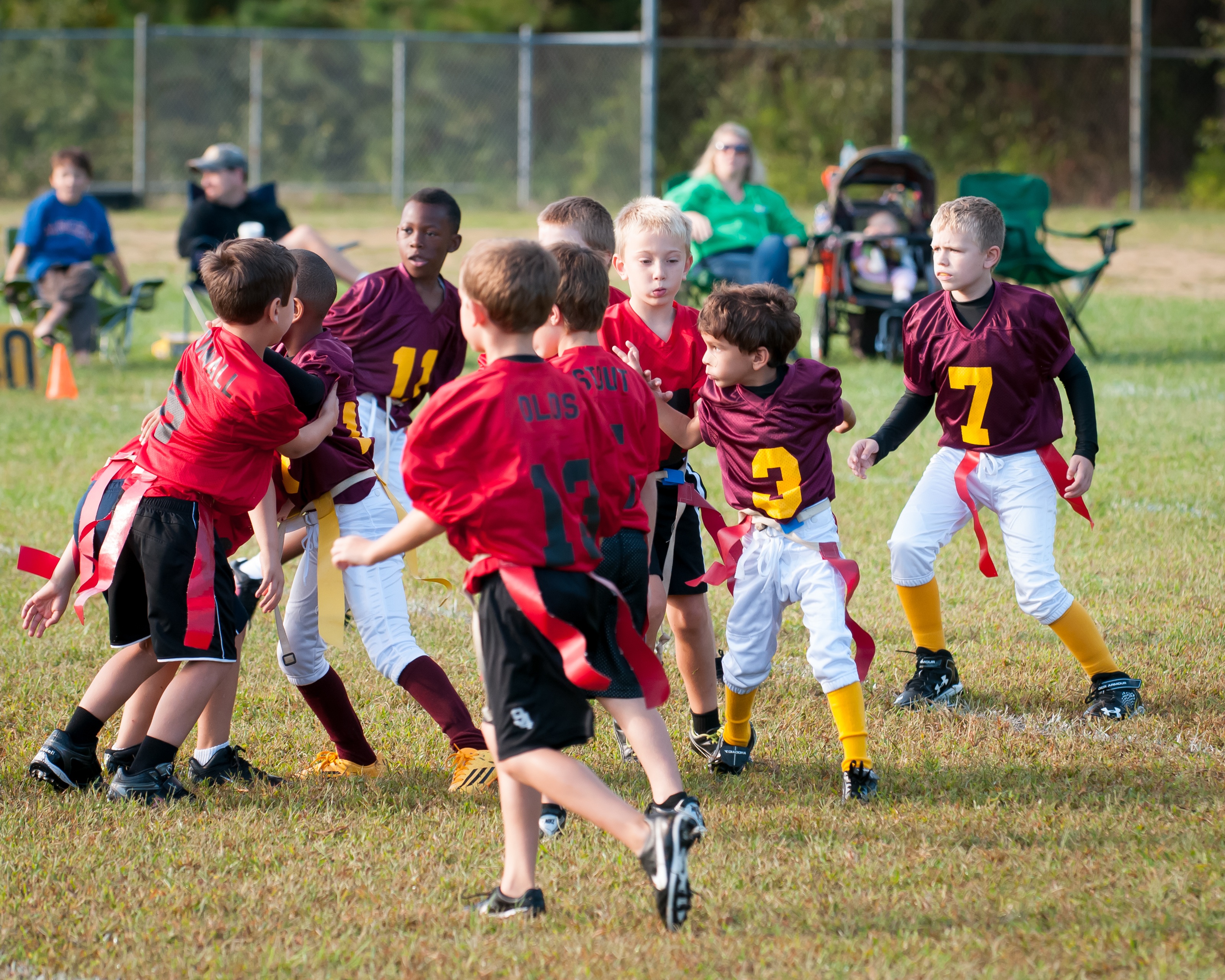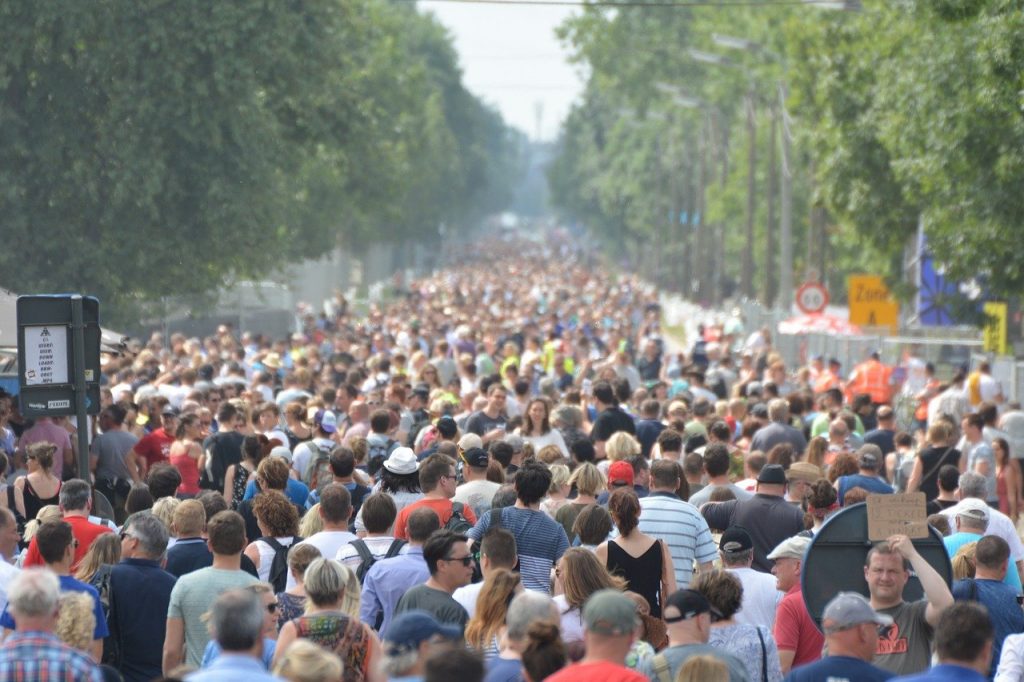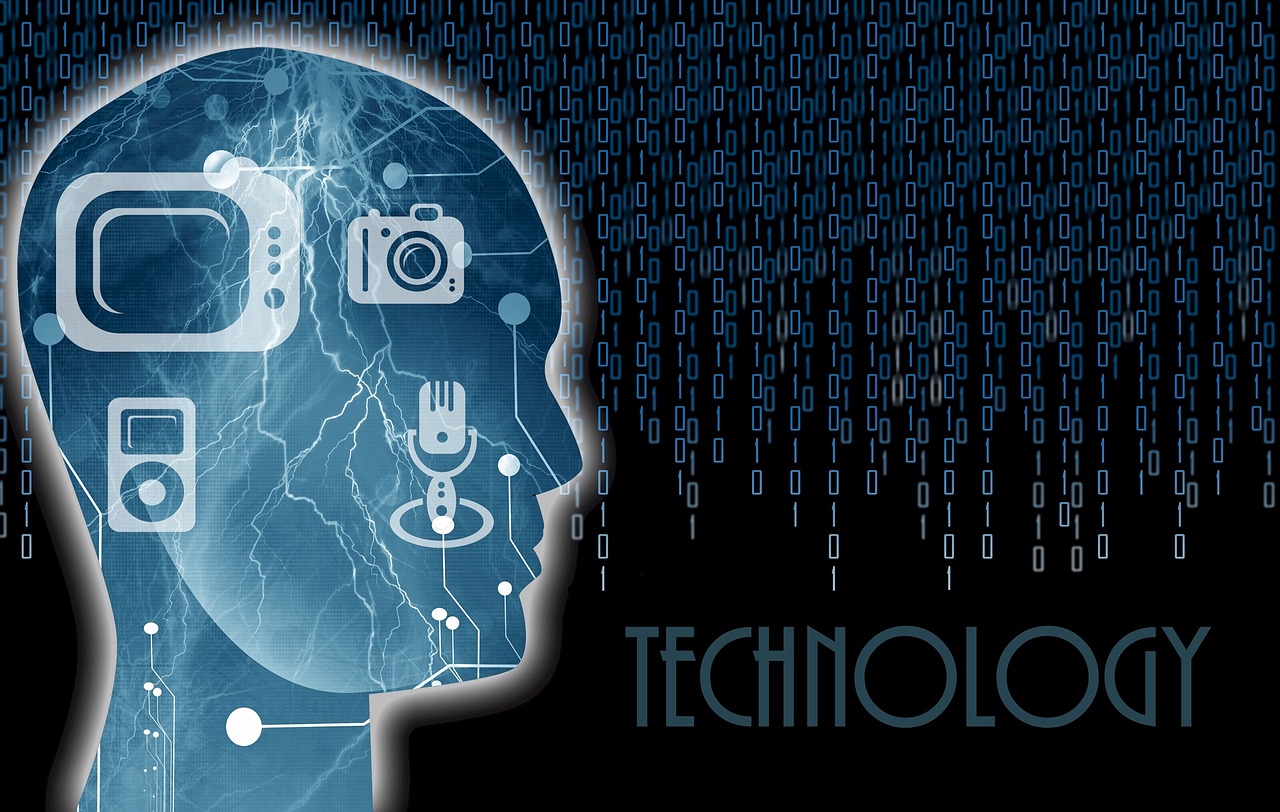21 The Impact COVID-19 has had on Sports
Will Haskell
Introduction
Sports have been strongly affected due to COVID-19, causing players and organizations to make major adjustments. Sports organizations have taken major financial losses due to empty or limited seating in stadiums. It has been hard for kids because sports are such a important part of their lives and it is a great way to socialize with friends. Fans have relied on technology in order to watch their favorite teams play. The prevention of full stadium games has played a key part in preventing the spread of COVID-19. COVID-19 has strongly affected sporting events by causing fans to use technology over going to games. It also caused cancelations or limited attendance of sporting events, with major financial impact for professional sports. The pandemic, in addition, is preventing athletes from playing and causing fans to attend games virtually.
Connection to STS Theory
COVID-19 has had a major impact on sports. It has been a hard time for athletes, fans, and sports organizations. The pandemic has affected people’s social lives by preventing athletes from playing the sports they love with their friends. Fans have also not been able to socialize with friends and family tailgating and while attending the game. COVID-19 has also demonstrated the extreme technological innovation in sports. This pandemic has caused everyone to work together by social distancing and preventing mass gatherings so the virus doesn’t spread. Even though sports organizations are losing money financially, they are keeping the fans safe.
How Sports have affected People’s Social Lives due to COVID-19

COVID-19 has affected people’s social lives because of the limitation and cancelling of sporting events. Sports are a great way for people to make new friends and engage in an activity that they love. It is an important part of children’s lives because kids love to compete and play with their friends. Kids often play sports year around, and taking sports activities away has been a big change for them. They have been spending more time with family as a result of COVID-19, but most parents wish that their kids were playing sports with their friends. Parents want the best for their kids and they know sports are good for both their physical and mental health.
In May of 2020 a UN report noted, “The global outbreak of COVID-19 has resulted in closure of gyms, stadiums, pools, dance and fitness studios, physiotherapy centers, parks and playgrounds. Many individuals are therefore not able to actively participate in their regular individual or group sporting or physical activities outside of their homes” (United Nations). This quote shows that with many activities outside of peoples homes have either been closed or restricted, and people are no longer as physically active as they were before the pandemic. Sports and outdoor physical activities have been a good bonding experience for families because they are spending more time together than they usually do. The pandemic has also been hard for sports fans because they are unable to attend games and tailgate together (United Nations). Tailgating, in particular, has been a great way for families and friends to get together before games.
However, a good mindset for people to have during this time is that things will get better. Parents should also be supportive and keep their kids positive during this tough time. COVID-19 has had a very strong impact on people’s social lives around the world. Although it is hard right now, there will eventually be social gatherings and kids will be able to go back to playing sports with their friends.
How Prevention of Mass Gatherings has Saved Lives
Following the start of the pandemic sports stadiums around the world have either been closed or have limited attendance. Attending mass gatherings during a pandemic can be extremely risky because they make it easy for viruses to spread. Mass gatherings at sporting events could bring millions of international and national travelers, who could either spread the virus or put themselves at risk for contracting it. Many college football teams have limited their stadiums to 25% capacity, and the NFL has been limiting attendance at their events as well. This has been a major challenge for players because they are used to playing in front of stadiums full of fans. Fans in the stands give the players encouragement to win and play hard, and their absence has affected the morale of players.
Due to COVID-19 many sports organizations have also had to reschedule their events to help prevent the spread of the virus. Soccer is probably the most popular sport in the world and it has been heavily affected by COVID-19. Countries in Asia, Europe, China, Costa Rica and more have all had to postpone their soccer league seasons. The Olympics got postponed to 2021, which is a big deal because they are held every 4 years (Reuters Staff).
However, sporting events can still be held during pandemics. The African Youth Games in 2014, The Africa Cup of Nations in 2015, and The All-Africa Games in 2015 all were mass gatherings that attracted diseases. All these sporting events were held in West Africa during a time when the Ebola Virus was spreading. This outbreak in West Africa resulted in over 28,637 cases and 11,315 deaths. The three events were held with minimal infection because sports organizations in the region have learned lessons from previous Ebola outbreaks. They required host countries to put in place public health programs that increased surveillance for Ebola infection during the events, and to have response plans for any cases of the Ebola Virus. The experience of these three mass gatherings shows that sporting events can be safely held if countries take proper precautions (Blumberg et al.). Lessons from Ebola have helped sports organizations during the COVID-19 pandemic.

It is important for fans to wear masks and social distance to prevent the spread of the virus. Masks are recommended as a face guard because they help prevent respiratory droplets from traveling through the air. This prevents the spread of germs when people are sneezing, coughing, and talking. It is important that masks are worn any time people are in a public place or when they are with a group. Most of COVID-19 spread occurs when people are closer than 6 feet apart. Even though it is hard to maintain 6 feet apart, doing so has been scientifically proven to prevent COVID-19 infection (Centers for Disease Control and Prevention). If more people wore masks and socially distanced, we would have far fewer cases in the world. This shows how crucial it is for fans attending games to follow these proper health guidelines. This increases the safety of all fans and helps to ensure more games.
If full stadium sporting events were held fans would be using public transportation. With all professional sports teams being in big cities, this would be a major problem. When people are tightly packed together and touching the same handrails, it is very likely for the virus to spread. Travel is known to be one of the major causes of disease transmission. Bans of Travel can scare people and cause an impact on the supply of essential items. Therefore, it is crucial that limited frequency of transport such as flights and trains are incorporated with COVID-19 restrictions to limit the demand for travel (Parnell et al.). Limiting travel is not ideal but could play a major role in preventing the spread of the Virus.
The Major Financial Impacts Sports Organizations have had
The week of March 9, 2020 is when all sporting events were brought to a halt. The National Hockey League (NHL) and National Basketball Association (NBA) both paused their seasons and the Major League Baseball (MLB) pushed back opening day. The National Collegiate Athletic Association (NCAA) canceled both men’s and women’s college basketball tournaments on March 12, 2020. At this point, the NFL was not sure what they were going to do about their season (Ehrlich et al.). With no games going on and empty stadiums this was a nightmare for sports organizations. They lost a great deal of revenue in the short term.

There are 3 main types of income for sports leagues: broadcasting, commercial, and match day revenue. Over the course of 2020 the MLB, NHL, NBA, NFL, and Premier League have all had major decreases in revenues compared to previous years (Hall). It has been estimated that sports organizations have lost $160 billion because of missed games, broadcast revenue, gate revenues and salary obligations. Since 40% of MLB revenue comes from game time experience, they will be losing a great deal of money. To cope with losses, players are getting salary cuts for games played without fans. It is possible that COVID-19 may leave long term financial impacts to sports organizations as well. Though bigger and more popular leagues may be able to survive, smaller and less popular sports and leagues are in major financial trouble. USA Rugby decided to file for bankruptcy because of the negative financial impacts of this pandemic. The cancellations of many sporting events due to COVID-19 is going to cause financial strain for many different clubs and leagues (Ehrlich et al.).
Before COVID-19, the sports industry was on the rise, earning more and more income each year. Limited or no fans in the stands and the cancellations of games have been the main reason these leagues have lowered their revenues. During COVID-19 millions of jobs are at risk globally, not just for sports professionals but also for those in retail, sporting services and other industries connected with events and leagues. These industries include tourism, travel, infrastructure, transportation, catering and media broadcasting (Ehrlich et al.). Efforts to prevent the spread of COVID-19 has caused revenues to decrease. However, the hope is that sports industries will bounce back after this pandemic and be more successful than ever before.
How Technology has affected Sports
Technology has had a major impact on sports during COVID-19. Fans have had to watch games on television because they are not able to physically attend the games. If we didn’t have technology, there would be no way for fans to watch their favorite teams play. It has been hard for sports broadcasters because without fans, it has been difficult to capture emotional moments in sports. Fans make stadiums come alive with the roars as well as the emotions. They have faith in their team, which gives athletes motivation when they are getting cheered for. Fan participation makes sports more intense and exciting. Fans have realized how important they are for sports teams, so they made cardboard cutouts of themselves that are placed in the empty stands of stadiums for players to see. This shows that the fans support and want to be with their team. Sports organizations are thinking of new ways to recreate the drama of fandom in the stadium. For example, Star India, a major media company in the country has installed screens and speakers that will replicate the visual and sound effect of fans in the stands. Technology will give players a feeling of progression and consistency that is desirable over an agitating quietness. It will be better than putting inflatable dolls or mannequins in the stands (Majumdar & Naha).

The COVID-19 outbreak has given broadcasters a chance to change their conventional way to deal with sport. For people who are watching sports on television, it is important that broadcasters show videos of fans at home watching their team during parts of the telecast. The fans watching the game on their couch will replace the fans that are shown in the stands. Cameras can’t show screaming fans in the stands, but they can show the emotions of fans at home anxiously watching their team play. Anyone that has a smartphone and an internet data package can record, send, or live stream their reactions. Fans can use a mobile app to send a video straight to the channel that is being streamed. The channel will sort the recordings, select a couple, and collect them with the video feed of the match. They will receive text messages and tweets from the fans that the channel will put on the screen as questions. Specialists are then asked to answer these inquiries to make the coverage intuitive (Majumdar & Naha).
People in different time zones from all around the world can watch a sporting event on different devices. Live sports have been amazing because it has replaced the fan experience of attending the game. In the NBA, Fans are able to attend games virtually. This is cool for both the fans and the players because the fans get to see themselves on tv supporting their team and the players get to have virtual fans support them. Television producers of sports have tested technological improvements such as Spidercam, Segway, drone footage, placing a camera on umpires, and putting audio devices for live chats with players during play (Majumdar & Naha). COVID-19 has really shown how creative people have gotten with technology for sporting events.
Conclusion
COVID-19 has restricted people’s social lives because they can’t play sports with friends. This has been hard for many people because of the social aspect of and the love for sports. Sports has also been a good bonding experience for families, and COVID-19 has challenged this as well. The pandemic had major financial impacts on the sports industry and it has made sports organizations and fans to rely more on online technology. The lack of fans at games has also been difficult for athletes. However, technological innovations that emerged in response to the pandemic have been amazing and they have allowed fans to continue supporting their team. Even though these financial losses have been hard for sports organizations, they will bounce back stronger than before. Professional Athletes have fought through this tough time and have kept playing. The fans have also stayed supportive of their teams and have encouraged the players through technology.
References
Blumberg, Lucille, et al. “Hosting of Mass Gathering Sporting Events during the 2013–2016 Ebola Virus Outbreak in West Africa: Experience from Three African Countries.” International Journal of Infectious Diseases, vol. 47, 2016, pp. 38-41. https://doi.org/10.1016/j.ijid.2016.06.011.
Centers for Disease Control and Prevention. “COVID-19: Considerations for Wearing Masks.” Centers for Disease Control and Prevention, 4 Nov. 2020, https://www.cdc.gov/coronavirus/2019-ncov/prevent-getting-sick/cloth-face-cover-guidance.html. Accessed 17 Nov. 2020.
Ehrlich, Justin, et al. “COVID-19 Countermeasures, Sporting Events, and the Financial Impacts to the North American Leagues.” Managerial Finance, vol. 7, 2020, https://www.emerald.com/insight/content/doi/10.1108/MF-05-2020-0275/full/html.
Hall, Stefan. “This is how COVID-19 is affecting the world of sports.” World Economic Forum, 9 Apr. 2020, https://www.weforum.org/agenda/2020/04/sports-covid19-coronavirus-excersise-specators-media-coverage/. Accessed 17. Nov. 2020.
Majumdar, Boria, and Souvik Naha. “Live sport during the COVID-19 crisis: fans as creative broadcasters.” Sport in Society, vol. 23, no. 7, 2020, pp. 1091–1099. https://doi.org/10.1080/17430437.2020.1776972.
Parnell, Daniel, et al. “COVID-19, Networks and Sport.” Managing Sport and Leisure, vol. 3, 2020, pp. 1-7. https://doi.org/10.1080/23750472.2020.1750100.
Reuters Staff. “Impact of COVID-19 pandemic on sports events around the world.” 11 Jun. 2020, http://www.reuters.com/article/us-health-coronavirus-sport/impact-of-covid-19-pandemic-on-sports-events-around-the-world-idUSKBN23I1UC. Accessed 17 Nov. 2020.
United Nations Department of Economic and Social Affairs. “The impact of COVID-19 on sport, physical activity and well-being and its effects on social development.” United Nations, 15 May 2020, https://www.un.org/development/desa/dspd/2020/05/covid-19-sport/. 17 Nov. 2020.
Images
“Finance Illustrations” by everywheremedia is in the Public Domain, CC0
“KIDS PLAYING FOOTBALL” by Venus Fomby is in the Public Domain, CC0
“Mass People Groups” by Ben Kerckx is in the Public Domain, CC0
“Technology Illustrations” by skeeze is licensed under CC BY-SA 4.0

